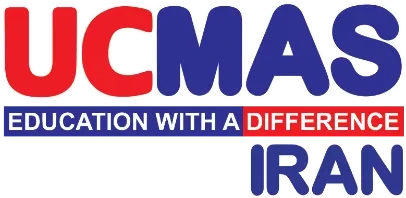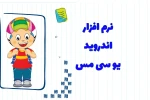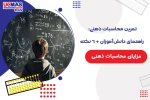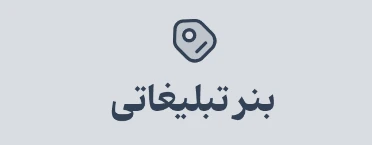What is the Chortkeh? | The Iranian Abacus and Its Uses

The abacus, this ancient calculation tool, has held a special place in various cultures around the world. But what are the unique features of the Iranian abacus, and how has it played a role in our history and culture? In this article, we explore the history of the abacus in Iran, the types of abaci used in ancient and modern Iran, and its applications.
What is the Iranian Abacus?
According to available information, traditional Iranian abaci, known as "Chortkeh" or "چورتکه," typically featured 10 columns, aligning with the decimal number system. This design allowed users to perform mathematical calculations efficiently.
The History of the Abacus in Iran
Historical sources indicate that Iranians began using the abacus during the Achaemenid Empire (circa 600 BCE). During this period, Iranians exchanged knowledge and inventions with countries such as India, China, and the Roman Empire, contributing to the development and spread of abacus usage. This tool evolved over time and continued to be utilized in later periods.
Additionally, some sources mention the use of sand tables for calculations in the Persian world. Islamic astronomers used sand-covered boards to perform and erase their calculations.
Types of Abaci Used in Iran
- Traditional Iranian Abacus (Wooden Abacus): Traditional Iranian abaci, also known as wooden abaci, were made of wood and featured colorful beads on metal rods. These abaci were used for teaching mathematics and performing simple calculations.
- Modern Educational Abaci: Today, modern abaci are produced with various designs and materials and are used as educational tools in schools and learning centers to enhance children's math skills.
Applications of the Iranian Abacus in the Past and Present
- Commercial and Everyday Calculations: In the past, Iranian merchants and tradespeople used abaci for financial and commercial calculations. This tool helped them quickly and accurately compute their transactions.
- Teaching Mathematics: The abacus serves as an effective educational tool, playing a significant role in enhancing children’s math skills and developing their mental abilities. Using the abacus in education improves focus, memory, and problem-solving skills.
The Abacus in Iranian Culture and Art
The abacus is not only a computational tool but also a symbol of Iran's history and culture, used in handicrafts and decoration. Many old abaci with beautiful designs and engravings showcase the craftsmanship and taste of Iranians in creating this tool.
Does the Abacus Still Have Applications?
Despite technological advancements and the emergence of calculators and computers, the abacus continues to be used as an educational and even decorative tool in some communities. In Iran, the abacus remains a part of cultural heritage, appearing in children's education and as decor in homes and traditional spaces.
In modern times, the use of abaci such as UCMAS or Soroban has become one of the most effective methods for enhancing children’s mental math. These abaci, inspired by traditional computational systems, are used not only to teach fundamental math concepts but also to improve memory, focus, speed, and problem-solving skills in children. Educational programs based on UCMAS and Soroban, especially in schools and learning centers, encourage children to perform complex calculations by simply visualizing the abacus. This method is globally recognized as an effective tool for developing cognitive abilities and mental alertness in children.
How Can the Abacus Be Used in Everyday Life?
-
Teaching Children: Using the abacus in math education helps children better understand basic concepts and improve their calculation skills.
-
Enhancing Mental Skills: Practicing with the abacus can improve focus, memory, and problem-solving abilities in individuals.
-
Decoration: Traditional abaci with beautiful designs can serve as decorative elements in homes and workspaces.
Frequently Asked Questions (FAQs)
1. How does the Iranian abacus differ from abaci in other countries?
The Iranian abacus is distinct due to its unique design and use of local materials, such as wood and colorful beads. Additionally, the way it is used and taught in Iran has unique characteristics.
2. Is using the abacus effective in education?
Yes, using the abacus in math education helps children better understand basic concepts and improve their calculation skills.
3. How can one choose a suitable abacus?
To choose a suitable abacus, consider its build quality, materials, size, and design. Also, keep the purpose (education, decoration, or calculation) in mind.
4. Is learning to use the abacus difficult?
Learning to use the abacus requires practice and repetition, but with proper instruction and consistent effort, one can quickly gain proficiency.
5. During which period of Iranian history was the abacus used?
The abacus was introduced into Iranian culture during the Achaemenid Empire and was used across various historical periods, especially in trade and education.

 The Android UCMAS application (UCMAS Game App) + Features
The Android UCMAS application (UCMAS Game App) + Features
 What is Abacus? History, Types & Modern uses | UCMAS
What is Abacus? History, Types & Modern uses | UCMAS
 Mental Arithmetic Tests
Mental Arithmetic Tests
 Mental Arithmetic Practice
Mental Arithmetic Practice
 How to Solve Different Radicals with Various Indices on a Calculator
How to Solve Different Radicals with Various Indices on a Calculator






There are no comments yet!
Leave a comment